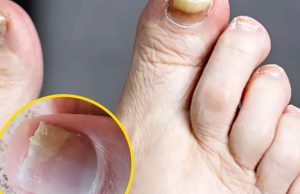
During the winter season, it’s typical to put on clothes and experience an unpleasant static shock. Static electricity can result in a jolt and cause garments to cling uncomfortably to the body. Certain fabrics are more susceptible to this issue, potentially leading to the neglect of your preferred dress or ensemble, resulting in both a waste of money and closet space. This guide covers the reasons behind static electricity and provides comprehensive information on eliminating static from clothing permanently.
What causes static?
The act of fabrics rubbing against one another generates an electric charge due to friction, with tumble dryers being significant contributors. Certain materials, including wool, polyester, and acrylics, are more susceptible to carrying an electric charge. Static electricity is more prevalent in colder seasons as there is reduced humidity, line drying is impractical in freezing temperatures, and winter garments, often made of heavy wool and flannels, are prone to retaining a charge.
The charge is easy to spot; you’ll hear crackling when the clothes move. Other signs include shocking others with a simple touch or when clothes cling to the body.
How to Prevent Static
Laundry habits directly impact whether static will affect your closet. Try these simple changes to prevent static for good.
- Use fabric softeners in the washing cycle to leave fabrics silkier. Rather than chemicals, try a diluted white vinegar with a natural essential oil instead.
- If weather permits, air dry clothes on a clothesline rather than machine drying.
- If you must tumble dry, use dryer balls to separate the clothes and improve air circulation. Dryer balls reduce the drying time and static buildup.
- Use dryer sheets, which cover fabrics with liquid surfactant to reduce static cling.
- Separate natural from synthetic fabrics before drying. Air dry synthetic fabrics, if possible.
- Shake clothes when unloading them from the dryer. Give each item 2-3 quick shakes before placing clothes on another surface or next to other clothing in a closet or dresser.
How to Get Rid of Static in Clothing

While preventing static in future laundry loads is beneficial, you may be curious about addressing static already present in the clean clothes stored in your closet and drawers. Here are four suggestions for eliminating static on clothes.
Dampen Garments: The primary reason for static is lack of moisture or dryness. This can be readily resolved by moistening the clothing. Gently spray dry clothes with lukewarm water or apply an anti-static fabric or fabric softener spray for a quick solution.
Moisturize Your Skin: Friction occurring between dry skin and fabrics is a notable contributor to static shock. To diminish static, massage lotion into your skin to alleviate dryness and enhance surface humidity. Beyond promoting healthy skin, creams and moisturizers serve to mitigate static accumulation on your body. Additionally, you may opt to apply talcum or baby powder to areas experiencing excessive clinging.
Use Dryer Sheets: Before putting on your garment, rub the inside of the fabric with a dryer sheet to eliminate unwanted sparks.
Use Metal: The magnetic charge in metal can disrupt cling and remove static in clothes. Glide a metal object like a hanger, thimble, or aluminum foil on the fabric to discharge electricity in your garment. You can also place a safety pin inside your clothes to help absorb static.
Are there fabrics that don’t attract static?
Yes! There are static dissipative fabrics or anti-static control clothing that can make static cling a thing of the past. The fabric consists of a combination of synthetic polyester yarn or fibers, along with cotton or carbon fibers. Initially utilized predominantly in medical environments, it is gradually gaining popularity in suits and professional attire.
Additionally, leather doesn’t attract or maintain static. This serves as a compelling reason to choose a leather jacket instead of a down, wool, or synthetic coat, as the latter materials are prone to accumulating friction and generating substantial static electricity throughout the winter season.
Silk and 100% cotton also don’t attract electrostatics. However, if they are next to synthetic fibers in the wash, dryer, or clothing storage, they can rub against other clothing and increase the static shock in those garments. Stick to wearing these natural items and launder them separately for the best results.




















